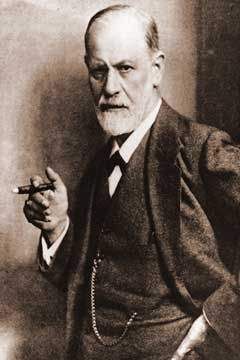Ознакомительная версия.
Ernde, R. N. (1988b). Development terminable and interminable: Part II, Recent psychoanalytic theory and therapeutic considerations, Int. J. Psychoanal., 69:283-296.
Ernde, R. N.; Gaensbauer, T; and Harmon, R.J. (1976). Emotional expression in infancy: A biobehavioral study. Psychological Issues, Monograph 37. New York: Int. Univ. Press.
Ernde, R. N., and Harmon, R.J. (1972). Endogenous and exogenous smiling systems in early infants. Amer. Acad. Child Psychiat., 11:177-200.
Ernde, R. N., and Robinson, J. (1979). The first two months: Recent research indevelopmental psychobiology and the changing view of the newborn. In Basic handbook of child psychiatry. Vol. I, ed. J. D. Call, J. D. Noshpitz, R. L. Cohen, and I. N. Berlin. New York: Basic Books, pp. 72-105.
Erode, R. N., and Sorce, J. F. (1983). The rewards of infancy: Emotional availability and maternal referencing. In Frontiers ofinfant psychiatry, ed. J. D. Call, E. Galenson, and R. L. Tyson. New York: Basic Books, pp. 17-30.
English, H. В., and English, A. C. (1958). A comprehensive dictionary of psychological and psychoanalytual terms. New York: David McKay.
Erikson, E. H. (1946). Ego development and historical change. Psychoanal. Study Child, 2:359-396.
Erikson, E. H. (1950). Childhood and society. New York: Norton.
Erikson, E. H. (1956). The concept of ego identity. Amer. Psychoanal. Assn., 4:56-121.
Erikson, E. H. (1959). Identity and the life cycle: Selected papers. Psychological Issues, Monograph 1. New York: Int. Univ. Press.
Erikson, E. H. (1968). Identity: Youth and crisis. New York: Norton.
Esman, A. H. (1983). The «stimulus barrier»: A review and reconsideration. Psychoanal. Study Child, 38:193-208.
Eysenck, H.J.; Arnold, W. J.; and Meili, R,, eds. (1972). Encyclopedia of psychology. Bungay, Suffolk: Richard Clay, The Chaucer Press.
Fairbairn, W. R. D, (1954). Observations on the nature of hysterical states. Brit. J. Med. Psychol., 29:112-127.
Fairbairn, W. R. D. (1963). Synopsis of an object – relations theory of the personality. Int. ]. Psychoanal., 44:224-225.
Fast, I. (1978). Developments in gender identity: The original matrix. Int. Rev. Psychoanal., 5:265-274.
Fast, I. (1979). Developments in gender identity: Gender differentiation in girls. Int. Rev. Psychoanal., 6:441-453.
Fast, I. (1985). Event theory. Hilisdale, N.J.: Eribaum.
Fenichel, O. (1941). The ego and the affects. In The collected papers of Otto Fenichel. 2nd ser. New York: Norton, 1954, pp. 215-227.
Fenichel, O. (1945). The psychoanalytic theory of neurosis. New York: Norton.
Ferenczi, S. (1912). Symbolism. InScxinpsyc.hoanalysis. New York: Basic Books, 1950, pp. 253-281.
Ferenczi, S. (1913), Stages in the development of the sense of reality. In Sex in psychoanalysis. New York: Basic Books, 1950, pp. 213-239.
Ferenczi, S. (1924). Thalassa: A theory of genitality. Albany: Psychoanalytic Quarterly, 1938.
Ferenczi, S. (1925). Psycho-analysis of sexual habits. In Further contributions to the theory and technique of psycho-analysis. New York: Basic Books, 1952, pp. 259-297.
Ferenczi, S. (1930). Notes and fragments, 11. In final contributions to the problems and methods of Psycho-analym. New York: Basic Books, 1952, pp. 219-231.
Flavell, J. H. (1977). Cognitive development. Englewood Cliffs, N. J.: Prentice-Hall.
Fogel, G. 1. (1989). The authentic function of psychoanalytic theory: An overview of the contributions of Hans Loewald. Psychoanal. 58:419-451.
Fraiberg, S. H. (1955). Some considerations in the introduction to therapy in puberty. Psychoanal. Study Child, 10:264-286.
Fraiberg, S. (1968). Parallel and divergent patterns in blind and sighted infants. Psychoanal. Study Child, 23:264-300.
Fraibcrg, S. (1969). Object constancy and mental representation. Psychoanal. Study Child, 24:9-47.
Fraiberg, S. (1972). Some characteristics of genital arousal and discharge in latency girls. Psychoanal. Study Child, 27:439-475.
Fraiberg, S. (1974). Blind infants and their mothers: An examination of the sign system. In The effect of the infant on its caregivcr, ed. J. M. Lewis and L. A. Rosenblum. New York: Wiley, pp. 215-232.
Fraiberg, S. (1982). Pathological defenses in infancy. Psychoanal. 51:612– 635.
Francis, J., and Marcus, I. (1975). Masturbation: A developmental view. In Masturbation from infancy to senescence, ed. J. Francis and I. Marcus. New York: Int. Univ. Press, pp. 9-51.
Freedman, D. G. (1965). Hereditary control of early social behavior. In Determinants ofvinfant behavior. Vol. 3, ed. B. M. Foss. New York: Wiley, pp. 149-159.
Freud, A. (1922). Beating fantasies and daydreams. In The writings of Anna Freud. Vol. 1. New York: Int. Univ. Press, 1974, pp. 137-157.
Freud, A. (1936). The ego and the mechanisms of defense. Vol. 2 of The writings of Anna Freud. Rev. ed. New York: Int. Univ. Press, 1966.
Freud, A. (1941—1945). Reports on the Hampstead Nurseries. The writings of Anna Freud. Vol. 3. New York: Int. Univ. Press, 1973, pp. 3-540.
Freud, A. (1949). Aggression in relation to emotional development: Normal and pathological. In The writings of Anna Freud. Vol. 4. New York: Int. Univ. Press, 1968, pp. 489-497.
Freud, A. (1951). Observation on child development. In The writings of Anna Freud. Vol. 4. New York: Int. Univ. Press, 1968, pp. 143-162.
Freud, A. (1952). The mutual influences in the development of Ego and Id. In The writings of Anna Freud. Vol. 4. New York: Int. Univ. Press, 1968, pp. 230– 244.
Freud, A. (1955), The concept of the rejecting mother. In The writings of Anna Freud. Vol. 4. New York: Int. Univ. Press, 1968, pp. 586-602.
Freud, A. (1958). Adolescence. In The writings of Anna Freud. Vol. 4. New York: Int. Univ. Press, 1968, pp. 136-166.
Freud, A. (1960). Discussion of Dr. John Bowlby's paper (Grief and mourningin infancy and early childhood). In The writings of Anna Freud. Vol. 5. NewYork: Int. Univ. Press, 1969, pp. 167-186.
Freud, A. (1962). Assessment of childhood disturbances. Psychoanal. Study Child, 17:149-158.
Freud, A, (1963). The concept of developmental lines. In The writings of Anna Freud. Vol. 6. New York: Int. Univ. Press, 1965, pp. 62-87.
Freud, A. (1965). Normality and pathology in childhood: Assessments of development. Vol. 6 of. The writings of Anna Freud. New York: Int. Univ. Press, 1965.
Freud, A. (1967). Comments on psychic trauma. In The writings of Anna Freud. Vol. 5. New York: Int. Univ. Press, 1969, pp. 221-241.
Freud, A. (1968). Panel discussion wilh J. Arlow (Mod.), J. Lampl-de Groot, and D. Beres. Int. Psychoanal., 49:506-512.
Freud, A. (1970a). The infantile neurosis. In The writings of Anna Freud. Vol. 7. New York: Int. Univ. Press, 1971, pp. 189-203.
Freud, A. (1970b). Child analysis as a subspecialty of psychoanalysis. In The writings of Anna Freud. Vol. 7. New York: Int. Univ. Press, 1971, pp. 204-219.
Freud, A. (1976). Changes in psychoanalytic practice and expcri encc. In The writings of Anna Freud. Vol. 8. New York: Int. Univ. Press, 1981, pp. 176-185.
Freud, A. (1979). Foreword. Psychoanal. Study Child, 34:3-4.
Freud, A. (1983). Problems of pathogcncsis: Introduction to the discussion. Psychoanal. Study Child, 38:383-388.
Freud, S. (1893). On the psychical mechanism of hysterical phenomena. In S.E., 3:25-39.
Freud, S. (1894). The neuropsychoses of defense. In S.E., 3:43-61. Freud, S. (1895a). On the grounds for detaching a particular syndrome from neurasthenia under the description «anxiety neurosis.» In S.E., 3:87-117. Freud, S. (1895b). Project for a scientific psychology. In S.E., 1:295-397.
Freud, S. (1896), Draft K. The neuroses of defense. In S.E., 1:220-232.
Freud, S. (1900). The interpretation of dreams. Vols. 4 and 5 of S.E. Freud, S. (1905a). Fragment of an analysis of a case of hysteria. In S.E., 7:31-122. Freud, S. (1905b). Three essays on the theory of sexuality, in S.E., 7:125-243.
Freud, S. (1908). Character and anal erotism. In S.E., 9:169-175.
Freud, S. (1909a). Analysis of a phobia in a five-year-old boy. In S.E., 10:5-149.
Freud, S. (1909b). Family romances. In S.E., 9:237-241.
Freud, S. (1911). Two principles of mental functioning. In S.E., 12:213-226.
Freud, S. (1912). On the universal tendency to debasement in the sphere of love. In S.E., 11:179-190.
Freud, S. (1913). Totem and taboo, in S.E., 13:1-161.
Freud, S. (1914). On narcissism: An introduction. In S.E., 14:67-102.
Freud, S. (1915a). Instincts and their vicissitudes. In S.E., 14:111-140.
Freud, S. (I915b). Repression. In. S.J.. 14:141-158.
Freud, S. (1915c). The unconscious. In S.E., 14:161-215.
Freud, S. (1916—1917). Introductory lectures on psycho-analysis. Vols. 15 and 16 of S. E.
Freud, S. (1917). Mourning and melancholia. In S.E., 14:237-259.
Freud, S. (1918). From the history of an infantile neurosis. In S. E., 17:3-122.
Freud, S. (1920). Beyond the pleasure principle. In S. E., 18:7-64.
Freud, S. (1921). Group psychology and the analysis of the ego. In S.E., 18:67-143.
Freud, S. (1923a). The ego and the id. In S.E., 19:3-66.
Freud, S. (1923b). The infantile genital organization. In S. E., 19:141-145.
Freud, S. (1924a). The dissolution of the Oedipus complex. In S.E., 19:172-179.
Freud, S.(1924b). The economic problem of masochism. In S.E., 19:157-170.
Freud, S. (1924c). The loss of reality in neurosis and psychosis, in S.E., 19:183-187.
Freud, S. (1925a). An autobiographical study. In S.E., 20:3-77.
Freud, S. (1925b). Some psychical consequences of the anatomical distinctionbetween the sexes. In S.E.. 19:243-258.
Freud, S. (1926). Inhibitions, symptoms and anxiety. In S.E., 20:77-175.
Freud, S. (1927). Dostoevsky and parricide. In S.E., 21:175-196.
Freud, S. (1930). Civilization and its discontents. In S.E., 21:59-145.
Freud, S. (1931). Female sexuality. In S.E., 21:223-246.
Freud, S. (1933). New introductory lectures on psycho-analysis. In S.E., 22:3-184.
Freud, S. (1939). Moses and monotheism. In S.E., 23:3-137.
Freud, S. (1940). An outline of psycho-analysis. In S.E., 23:141-207.
Friedman, L. (1980). The barren prospect of a representational world. Psychoanal. Q., 49:215-233.
Friedman, R. C. (1988). Malehonosexualily: A contemporary psychoanalytic perspective. New Haven: Yale Univ. Press.
Furer, M. (1967). Some developmental aspects of the superego. Int. J. Psychoanal., 48:277-280.
Furer, M. (1972). The history of the superego concept in psychoanalysis: A review of the literature. In Moral values and the superego concept in psycho-analysis, ed. S. C. Post. New York: Int. Univ. Press, pp. 11-62.
Furman, E. (1974). A child's parent dies: Studies in childhood bereavement. New Haven: Yale Univ. Press.
Furman, E. (1985). On fusion, integration, and feeling good. Psychoanal. Study Child, 40:81-110.
Furman. R. A. (1975). Excerpts from the analysis of a prepuberty boy. In Masturbation, ed. 1. M. Marcus and J. J. Francis. New York: Int. Univ. Press, pp. 223-229.
Gaensbauer, T. J. (1982). The differentiation of discrete affects: A case report. Psychoanal. Study Child, 37:29-66.
Galenson, E. (1964). Panel: Prepuberty and child analysis. Amer. Psychoanal. Assn., 12:600-609.
Galenson, E. (1984). Influences on the development of the symbolic function. In Frontiers of infant psychiatry. Vol. 2, ed. J. D. Call, E.
Galenson, and R. L. Tyson. New York: Basic Books, pp. 30-37.
Galenson, E. (1986). Some thoughts about infant psychopathology and aggressive development. Int. Rev. Psychoanal., 13:349-354.
Galenson, E. (1988). The precursors of masochism: Protomasochism. in Masochism: Current psychoanalytic perspectives, ed. R. A. Glick and D. I. Meyers. Hilisdale, N. J.: Analytic Press, pp. 189-204.
Galenson, E., and Roiphe, H. (1971). The impact of early sexual discovery on mood, defensive organization, and symbolization, Psychoanal. Study Child, 6:195-216.
Galenson, E., and Roiphe, H. (1974). The emergence of genital awareness during the second year of life. In Sex differences in behavior, ed. R. C. Friedman. New York: Wiley, pp. 223-231.
Galenson, E., and Roiphe, H. (1976). Some suggested revisions concerning early female development. J. Amer. Psychoanal. Assn., 24 (Suppl.):29-57.
Galenson, E., and Roiphe, H. (1980). The preoedipal development of the boy. J. Amer. Psychoanal. Assn., 28:805-828.
Geleerd, E. R. (1957). Some aspects of psychoanalytic technique in adolescence. Psychoanal. Study Child, 12:263-283.
Gilligan, C. (1982). In a different voice: Psychological theory and women's development. Cambridge: Harvard Univ. Press.
Glenn, J. (1984). A note on loss, pain and masochism in children. Amer. Psychoanal. Assn., 32:63-73.
Glover, E. (1945). Examination of the Klein system of child psychology. Psycho-anal. Study Child, 1:75-118.
Golding, W. (1955). Lord of the flies. New York: Capricorn Press.
Goldings, H. I. (1974). Jump – rope rhymes and the rhythm of latency development in girls. Psychoanal. Study Child, 29:431-450.
Gould, R. L. (1972). The phases of adult life: A study in developmental psychology. Amer. J. Psychiat., 129:521-531.
Green, A. (1975). The analyst, symbolization and absence in the analytic setting, Int. J. Psychoanal., 56:1-22.
Green, R. (1980). Patterns of sexual identity in childhood: Relationship to subsequent sexual partner preference. In Homosexual behavior: A modern reappraisal, ed. J. Marmor. New York: Basic Books, pp. 255-266.
Grcenacre, P. (1941). The predisposition to anxiety. In Trauma, growth and personality. New York: Norton, 1952, pp. 27-82.
Greenacre, R (1948). Anatomical structure and superego development. In Trauma, growth and personality. New York: Norton, 1952, pp. 149-164.
Greenacre, P. (1950). Special problems of early female sexual development. Psychoanal. Study Child, 5:122-138.
Greenacre, P. (1952a). Pregenital patterning, int.]. Psychoanal., 33:410-415.
Greenacre, P. (1952b). Trauma, growth, and personality. New York: Norton.
Greenacre, P. (1953a). Certain relationships between fetishism and the faulty development of the body image. In Emotional growth. Vol. 1. New York: Int. Univ. Press, 1971, pp. 9-30.
Greenacre, P. (I953b). Penis awe and its relation to penis envy. In Emotional growth. Vol. 1. New York: Int. Univ. Press, 1971, pp. 31-49.
Greenacre, P. (1958). Early physical determinants in the development of the sense of identity. In Emotional growth. Vol. 1. New York: Int. Univ. Press, 1971, pp. 113-127.
Greenacre, P. (1960). Considerations regarding the parent – infant relationship. In Emotional growth. Vol. 1. New York: Int. Univ. Press, 1971, pp. 199-224.
Greenacre, P. (1967). The influence of infantile traumas on genetic patterns. In Emotional growth. Vol. 1. New York: Int. Univ. Press, 1971, pp. 260-299.
Greenberg, J. R., and Mitchell, S. R. (1983). Object relations in psychoanalytic theory. Cambridge: Harvard Univ. Press.
Greenberg, M., and Morris, N. (1974). Engrossment: The newborn's impact upon the father. Amer. J. Orthopsychiat., 44:520 -531.
Greenson, R. R. (1954). The struggle against identification.y. Amer. Psychoanal. Assn., 2:200-217.
Greenson, R. R. (1968). Dis – identifying from mother: Its special importance for the boy. Int. J. Psychoanal., 49:370-374.
Ознакомительная версия.



